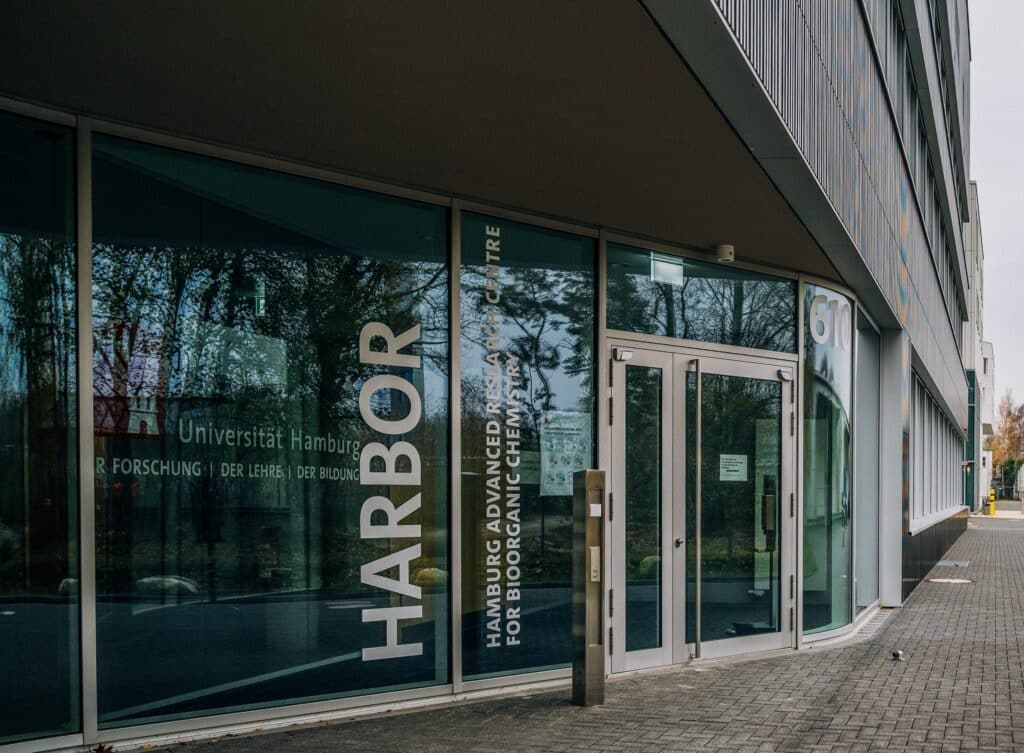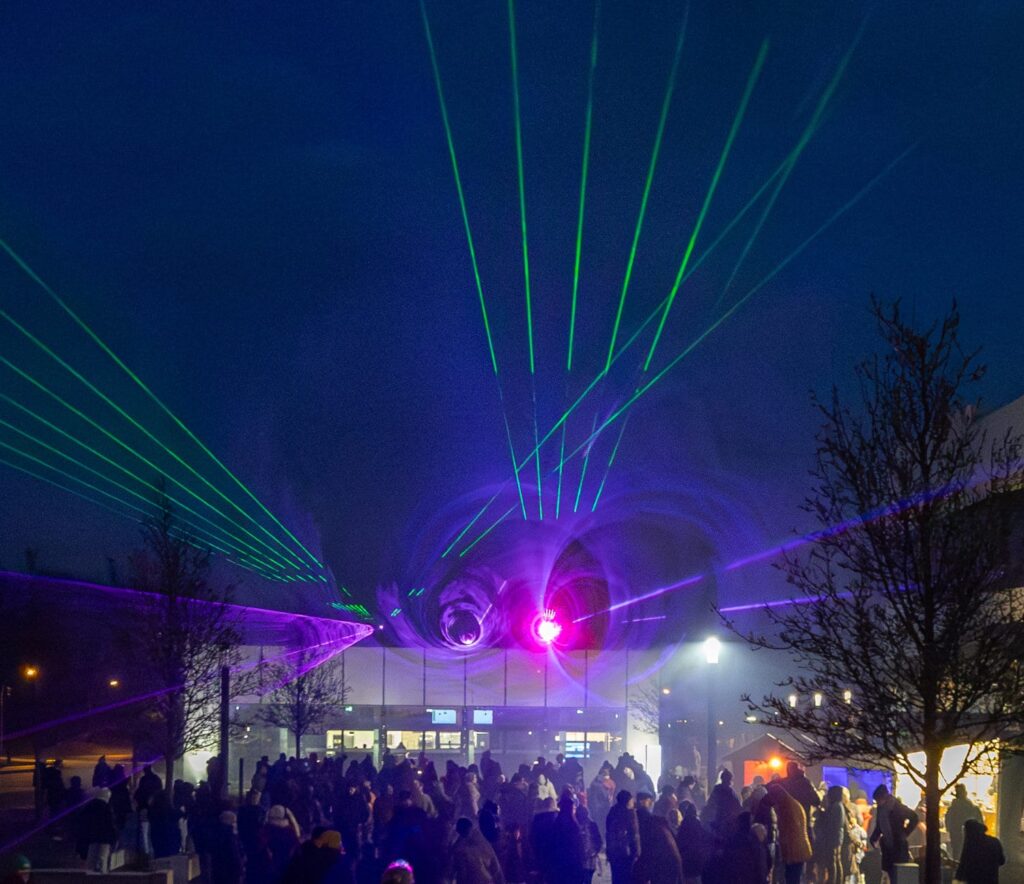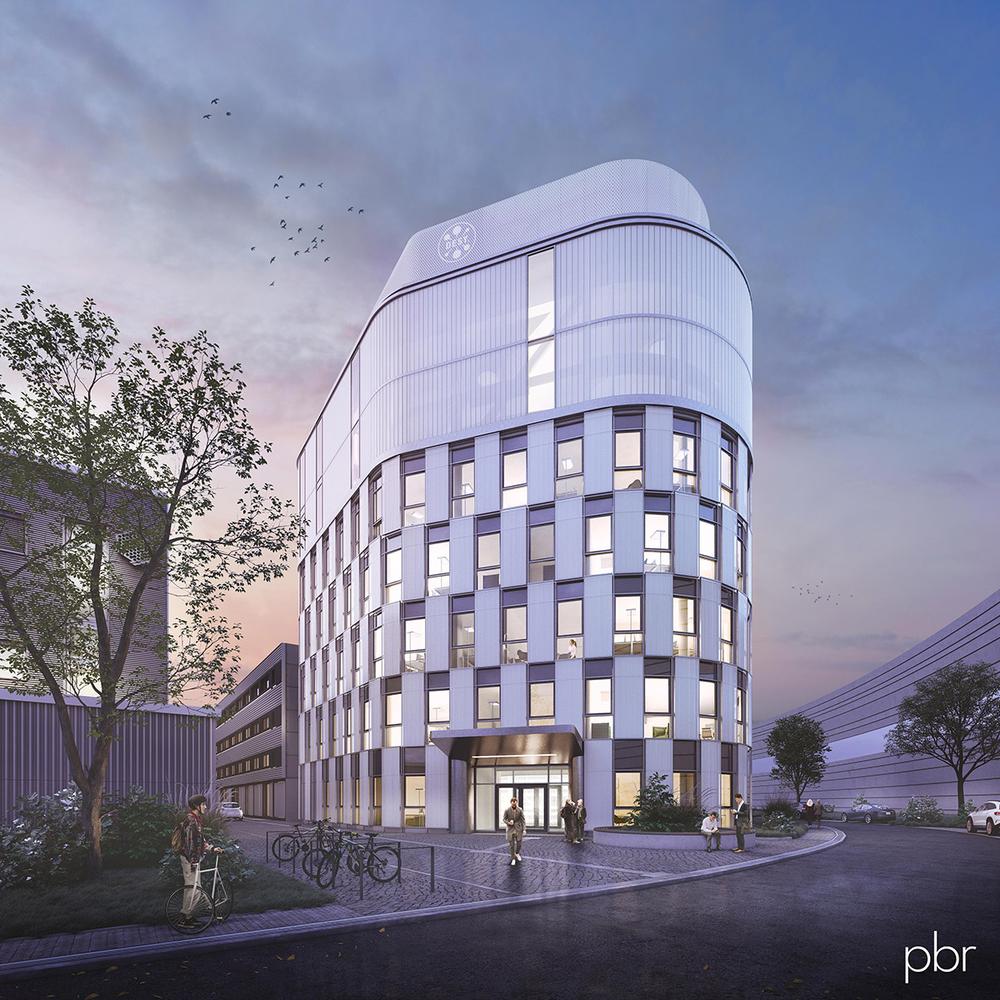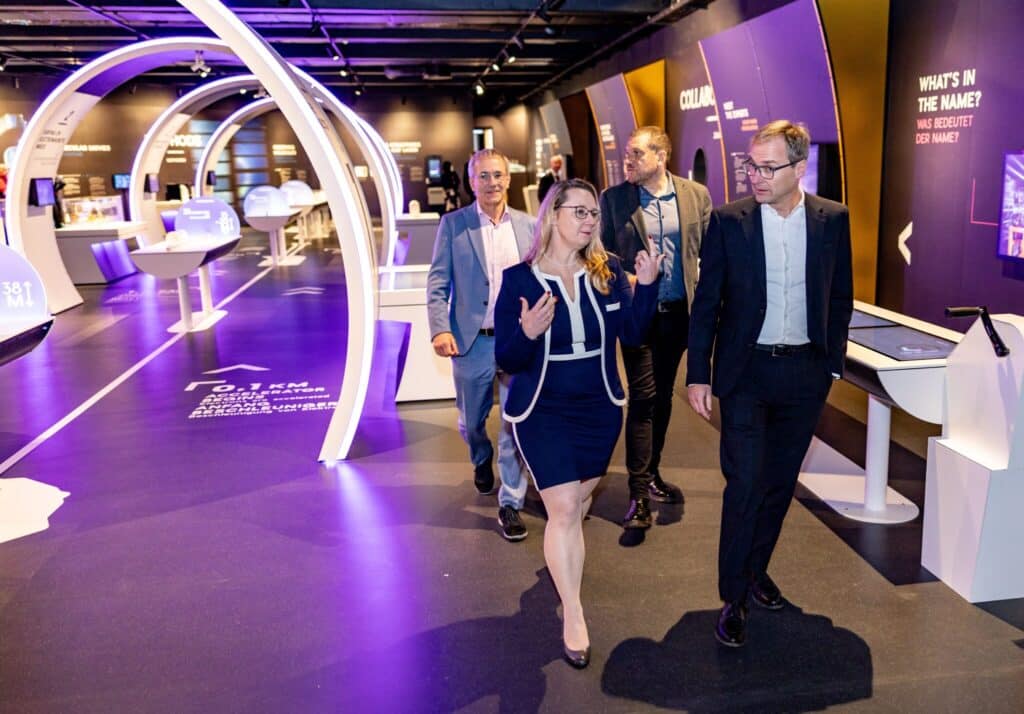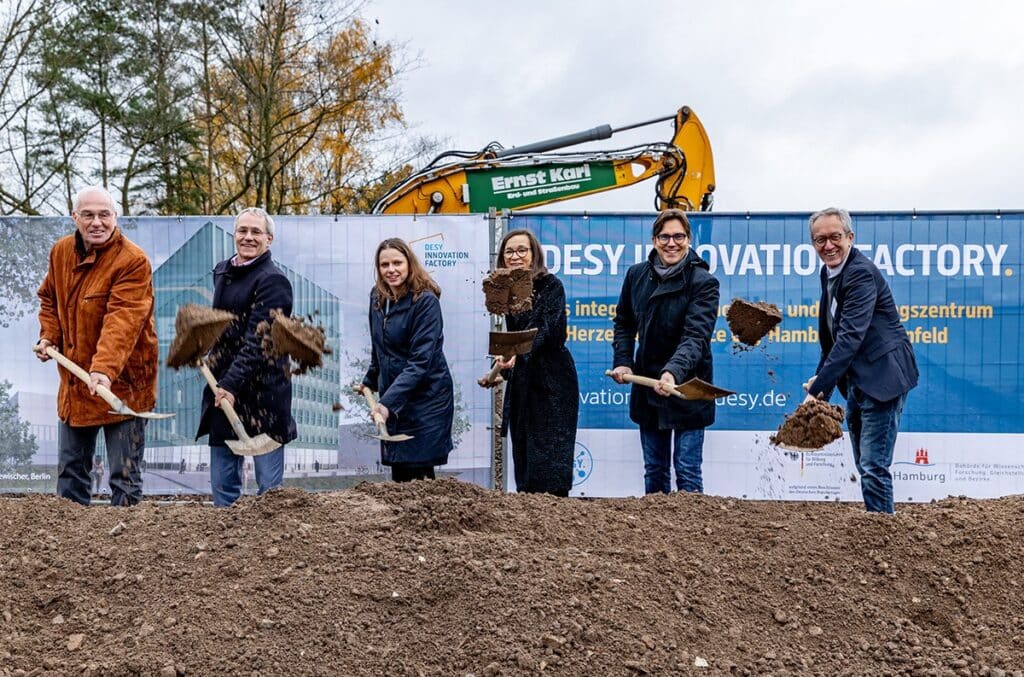The new research building "Hamburg Advanced Research Center for Bioorganic Chemistry (HARBOR)" of the University of Hamburg on the Bahrenfeld campus was digitally opened today. This makes it possible to apply the physical sciences to questions in the life sciences. In addition, the project of the Cluster of Excellence "CUI: Advanced Imaging of Matter" to develop a molecular film of processes in physics and chemistry will be expanded to include molecular biology.
The investigation of structures and processes in biological systems, such as enzymes, has gained enormously in importance in recent years. By directly observing the molecular processes that take place in our cells, it is possible, for example, to better understand the development and progression of diseases. Around 120 scientists will develop both experimental and theoretical-numerical concepts and methods in the research building HARBOR using interdisciplinary approaches in bio(an)organic chemistry, photochemistry, physical biochemistry and computer-aided modeling and simulation. The aim is to use light to understand how molecular systems function and to deduce from the interplay between experiment and theory how the observed processes and dynamic structural changes relate to biological function. The scientists have around 1,300 square meters of laboratory space at their disposal with shared facilities for nuclear magnetic resonance spectroscopy, X-ray diffraction, mass spectrometry and state-of-the-art ultrafast optical spectroscopy and vibrational spectroscopy.
Katharina Fegebank, Senator for Science: "Today's opening of HARBOR is another major step in the development of Science City Hamburg Bahrenfeld. What will be created here in the coming years is truly unique - with HARBOR as an important pillar of our knowledge metropolis. Top-level research at an international level will take place here in the future. In future, molecular processes of human cells will be studied at HARBOR in order to better understand and combat the emergence and development of diseases. I am excited to see how our scientists around Prof. Dr. Arwen Pearson will fill the rooms with life and wish all researchers a great start at the new location."
Prof. Dr. Dr. h.c. Dieter Lenzen, President of the University of Hamburg: "I am delighted that the University of Hamburg can open a new research building on the Bahrenfeld campus today at HARBOR . The view into the smallest molecular structures will contribute to taking the big step towards an internationally visible research campus, one of the locations of the future in Germany. Outstanding expertise and infrastructure are already available for this, and HARBOR will fit in perfectly as an interdisciplinary bridge between our key research areas 'Photon and Nanosciences' and 'Infection Research and Structural Biology'. I would like to thank the federal and state governments for this special new building, which has been tailored to the needs of excellent scientists."
Prof. Dr. Heinrich Graener, Dean of the Faculty of Mathematics, Informatics and Natural Sciences at the University of Hamburg: "The research building HARBOR brings together topics from molecular biology with approaches from biochemistry and the physical sciences. The research expands the existing research spectrum of static structural biology on the Bahrenfeld campus to include dynamic aspects and at the same time benefits from the immediate proximity to the innovative research infrastructure on site and the theoretical descriptions."
Prof. Dr. Arwen Pearson, senior scientist at HARBOR: "With the infrastructure of HARBOR , we are perfectly positioned to handle all aspects of a time-resolved structural biology experiment. HARBOR is located on the Science Campus Bahrenfeld, in close proximity to the large research infrastructures PETRA III and European XFEL. This allows us to take full advantage of our close collaboration with our campus partners at EMBL, DESY, CSSB and the Max Planck Institute for the Structure and Dynamics of Matter as well as the European XFEL. This means that we can not only advance our own work, but also act as an interface that provides complementary infrastructure and expertise to the national and international research community."
Martin Görge, Managing Director of Sprinkenhof GmbH: "The particular challenges of this field of research define very specific usage requirements that have to be interwoven in a highly complex and very individual building. We are therefore delighted to have created another building block in the expansion of Hamburg as a science location with the completion of HARBOR and would like to take this opportunity to thank the University of Hamburg and BWFGB for their excellent cooperation."
Background
HARBOR offers almost 3,000 square meters of net floor space for around 130 employees. The scientists will conduct research in eight working groups in the departments of Spectroscopy and Imaging, Structural Molecular Biology, Synthetic Chemistry and Theory. The building was realized by Sprinkenhof GmbH on behalf of the Ministry of Science, Research, Equalities and Districts (BWFGB) in a tenant-landlord model. The total project costs amount to around 32 million euros, of which the federal government covered 13.75 million euros. The façade of the new building is adorned with 6,000 black ceramic panels. As a continuous element, they symbolize the dynamism of the building and the research that will be based here in the future.
The Science City Hamburg Bahrenfeld
At Science City Hamburg Bahrenfeld , science is becoming the driving force behind urban development. New scientific institutes and facilities as well as around 2,500 apartments are being built around the research campus in Bahrenfeld. The vision for the future comprises four key areas: the expansion of the research center DESY, the development of the University of Hamburg, the creation of the innovation park Altona and the "Quartiere am Volkspark". The aim is to create a large, vibrant urban space in which working, researching, studying, living and working are combined.

